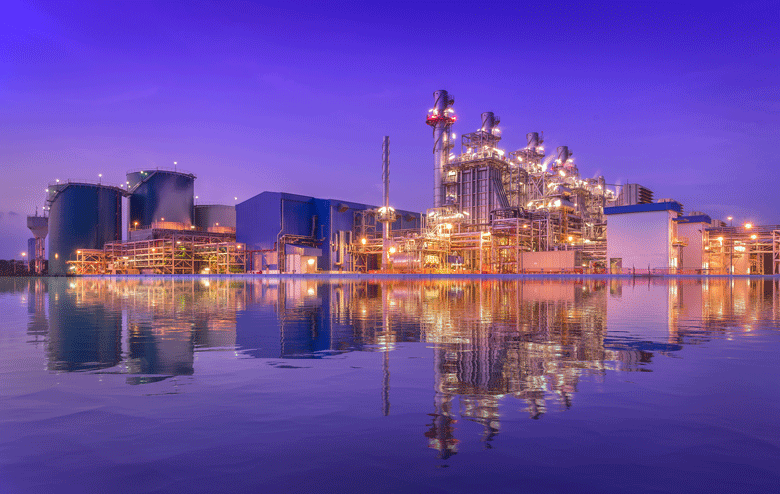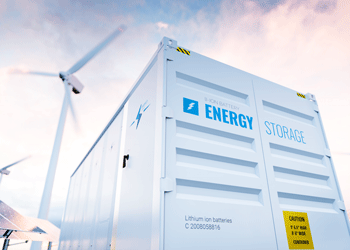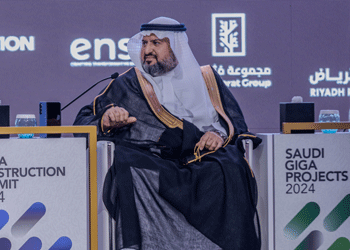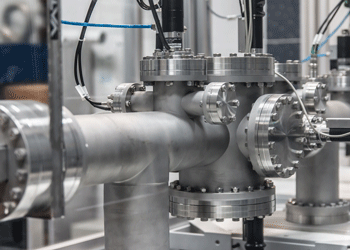Belt and Road woes could benefit the Gulf
31 March 2023
The Gulf region could benefit from the growing signs of strain affecting China’s Belt and Road Initiative (BRI).
Beijing has substantially increased its lending for bailouts to developing countries following a series of debt write-offs, controversies and corruption allegations. As the financial burden increases, Chinese companies and financial institutions could respond by shifting their focus to less risky markets such as the Gulf.
A study published by the Kiel Institute for the World Economy found that between 2019 and the end of 2021, China extended $104bn in rescue loans to developing nations, almost equal to its bailout lending over the previous two decades. From 2000 until the end of 2021, China carried out 128 bailout operations in 22 countries with a total value of $240bn.
Interest rates
Compared to loans from agencies such as the IMF with interest rates of about 2 per cent, the Chinese emergency loans come with interest rates in the region of 5 per cent, making them unaffordable for some countries. This has led to criticism of China’s aid strategy – claims that Beijing has publicly rejected.
The BRI is a global infrastructure initiative that aims to build a network of trade and infrastructure projects connecting China with more than 100 countries across Asia, Europe, Africa and the Middle East.
The BRI has been a way for China to expand its global economic and political influence by financing and constructing infrastructure projects such as roads, railways, ports and power plants, among others, in participating countries.
Chinese President Xi Jinping formally announced the initiative during a speech at Nazarbayev University in Kazakhstan in September 2013. During the speech, Xi Jinping proposed the creation of a Silk Road Economic Belt and a 21st Century Maritime Silk Road. The initiative promoted regional and global economic development, strengthened cooperation and connectivity among participating countries, and enhanced cultural exchange and mutual understanding.
As well as burdening countries with unaffordable debts, another criticism of the BRI is that it needs to be clearly defined and centrally managed in Beijing. After being announced in a speech, Chinese companies have been tacitly encouraged to support development projects overseas. Without oversight, these projects and associated loans have sometimes failed to succeed commercially.
Regional connection
While the BRI has yet to be clearly defined, the Middle East is part of it. The clearest demonstration came in December last year when Saudi Arabia’s King Salman bin Abdulaziz al-Saud and President Xi Jinping signed a comprehensive strategic partnership agreement in Riyadh, and a series of high-level commitments, including one to harmonise the goals of Saudi’s Vision 2030 with China’s BRI.
If China chooses to become more risk-averse with its BRI investments, Saudi Arabia and several other key Middle Eastern markets could be prime areas of focus. The other countries are the UAE, Kuwait, Iran, Iraq and Egypt. The Gulf countries have large hydrocarbon reserves, which are a strategic priority for China. The revenues they generate also give countries the cash flow to service any loans extended by Beijing.
According to the US Energy Information Agency, China was the world’s second-largest oil consumer behind the US in 2021. It consumed 14.76 million barrels a day, which equates to 15 per cent of the global total.
Egypt is considered strategically important because of the Suez Canal. The waterway enables China to import raw materials from the Middle East and Africa and export finished goods to Europe and other markets. Any disruption to the flow of goods through the canal, such as the blockage caused by the Ever Given container ship in March 2021, can have significant economic consequences for China.
Busy working
China is already backing significant levels of project activity in these countries. Major contract awards secured by Chinese construction companies in Saudi Arabia during 2022 include contracts to build photovoltaic solar power plants, tunnels, roads, bridges and a cement plant.
This year a Chinese-led consortium is well placed to win work on the $7bn Saudi Landbridge project. It was reported in January that negotiations are ongoing for the final cost and financing of the scheme, which involves building a railway network across the kingdom from the Red Sea coast to the Gulf.
China National Nuclear Corporation is also one of the companies bidding for the contract to build the kingdom’s first nuclear power plant.
Chinese companies are involved in various major projects in the UAE, including Etihad Rail, the Hassyan coal-fired power plant and the Mohammed bin Rashid Solar Park. China’s oil and gas infrastructure investments include China National Offshore Oil Corporation (CNOOC), a subsidiary of China National Petroleum Corporation (CNPC), which holds a 4 per cent stake in Abu Dhabi’s hydrocarbon blocks. In addition, Chinese companies are investing in other sectors, such as the development and operation of Khalifa Port’s second container terminal and the China-UAE Capacity Demonstration Park.
In Egypt, China State Construction Engineering Corporation (CSCEC) is working on the New Administrative Capital project east of Cairo. China is also involved in constructing a new industrial zone in the Suez Canal Economic Zone, which aims to attract foreign investment and boost economic growth. For example, at the end of March, it was reported that Chinese company Xinxing Ductile Iron Pipes plans to invest $2bn in iron and steel plants in the economic zone.
In Iraq, Chinese companies are heavily involved in the oil and gas sector. Chinese contractors dramatically ramped up their activities in Iraq’s energy sector, winning 87 per cent of all oil, gas and power project contracts awarded in the country during 2022.
There is plenty of room for Chinese involvement to grow in the future. According to regional projects tracker MEED Projects, there are $1.3tn of projects in the pre-execution stages across Saudi Arabia, the UAE, Kuwait, Iran, Iraq and Egypt.
Exclusive from Meed
-
 Sumitomo team submits Facility E bid
Sumitomo team submits Facility E bid25 July 2024
-
 Iraq drives Gulf projects market growth
Iraq drives Gulf projects market growth25 July 2024
-
 Abu Dhabi tenders 400MW battery storage contract
Abu Dhabi tenders 400MW battery storage contract25 July 2024
-
 Transforming Riyadh into a world-class city
Transforming Riyadh into a world-class city25 July 2024
-
 WTTCO tenders water pipeline and reservoir packages
WTTCO tenders water pipeline and reservoir packages25 July 2024
All of this is only 1% of what MEED.com has to offer
Subscribe now and unlock all the 153,671 articles on MEED.com
- All the latest news, data, and market intelligence across MENA at your fingerprints
- First-hand updates and inside information on projects, clients and competitors that matter to you
- 20 years' archive of information, data, and news for you to access at your convenience
- Strategize to succeed and minimise risks with timely analysis of current and future market trends

Related Articles
-
 Sumitomo team submits Facility E bid
Sumitomo team submits Facility E bid25 July 2024
A team led by Japan's Sumitomo Corporation submitted a bid for the contract to develop and operate Qatar’s Facility E independent water and power producer (IWPP) project.
Qatar state utility General Electricity & Water Corporation (Kahramaa) previously extended the tender closing date for the contract in response to developers’ requests, as MEED reported.
Kahramaa received the single bid on 25 July.
Sumitomo is understood to have submitted a proposal for the contract along with fellow Japanese utility developer Shikoku Electric, and Seoul-headquartered Korea Overseas Infrastructure & Urban Development Corporation and Korea Southern Power Company.
The developer consortium's engineering, procurement and consortium (EPC) partner is South Korea's Samsung C&T, according to sources close to the project.
The Facility E IWPP scheme will have a power generation capacity of 2,300MW and a water desalination capacity of 100 million imperial gallons a day (MIGD).
The contract to develop the Facility E IWPP was first tendered in 2019. The three teams that submitted bids for the contract in August 2020 were:
- Engie (France) / Mitsui (Japan) / Yonden (Shikoku Electric, Japan)
- Sumitomo / Kansai Electric (Japan)
- Marubeni / Kyushu Electric (Japan)
The original plan was for Facility E IWPP to have a power generation capacity of about 2,300MW and a desalination component of 100MIGD once fully operational.
However, Kahramaa revised the power plant’s design capacity to 2,600MW and sought alternative prices from bidders.
Kahramaa eventually cancelled and reissued the tender in September 2023. The current tender entails a power generation plant with the same capacity as initially tendered in 2019.
MEED understands that the new target commercial operation date for the Facility E IWPP project has been moved to 2027.
The state utility’s transaction advisory team includes UK-headquartered PwC and Clyde & Co as financial and legal advisers, respectively, led by Belgrade-headquartered Energoprojekt as technical adviser.
Facility E is Qatar’s fifth IWPP scheme. Completed and operational IWPPs include three projects in Ras Laffan – known as Facilities A, B and C – and Facility D in Umm Al-Houl.
Awarded in 2015 and completed in 2018, Facility D was developed by a Japanese consortium of Mitsubishi Corporation and Tokyo Electric Power Company (Tepco). South Korea's Samsung C&T was the engineering, procurement and construction contractor.
https://image.digitalinsightresearch.in/uploads/NewsArticle/12220438/main.gif -
 Iraq drives Gulf projects market growth
Iraq drives Gulf projects market growth25 July 2024

The Gulf Projects Index rose by 0.7% from 7 June to 12 July, spurred by value gain in the Iraq projects market and, to a lesser extent, the UAE projects market, while the Saudi projects market experienced a slight contraction.
The rise in the index represents the 16th consecutive month of upward trending value in the regional projects market, dating back to March 2023.
Iraq rail plans
The Iraqi projects market gained $26.3bn in value, or 7%, due to the reactivation of plans for a national network of high-speed rail connections across the country, from north to south as well as east to west. The costs of these Iraq rail schemes, which have been under study in various forms for several decades, are relatively indeterminate, but run into the tens of billions of dollars. The rail network is now in the design phase.
In another major development for the country, the $27bn Gas Growth Integrated Project (GGIP) being undertaken by the National Oil Company and Basra Oil Company, in partnership with TotalEnergies and QatarEnergy, has also passed from study into front-end engineering and design.
Elsewhere in the region, the UAE projects markets increased in value by $10.6bn, or 1.3%, while Saudi Arabia’s projects market shrank by a comparable $13.9bn, though lesser 0.7%, reducing its value to around about the value it held
in mid-May.The other countries in the GCC and wider Gulf saw comparatively minor changes, with Qatar’s projects market adding $3.9bn or 1.7%, Bahrain’s projects market adding $2bn or 2.9%, Iran’s projects market adding $1.4bn or 0.5%, and Oman’s projects market adding a marginal $0.2bn or 0.1%. Kuwait’s project market value slipped by $0.7bn or 0.4%.
https://image.digitalinsightresearch.in/uploads/NewsArticle/12219885/main.gif -
 Abu Dhabi tenders 400MW battery storage contract
Abu Dhabi tenders 400MW battery storage contract25 July 2024
State offtaker Emirates Water & Electricity Company (Ewec) has invited prequalified companies to submit their proposals for a contract to develop and operate an independent 400MW battery energy storage system (bess) power project in Abu Dhabi.
Ewec expects to receive bids by the fourth quarter of 2024.
The planned facility is expected to provide up to 800 megawatt-hours (MWh) of storage capacity.
Called Bess 1, the project will closely follow the model of Ewec's independent power project (IPP) programme, in which developers enter into a long-term energy storage agreement (ESA) with Ewec as the sole procurer.
The first plant will be in Al-Bihouth, approximately 45 kilometres (km) southwest of Abu Dhabi, and the second plant will be in Madinat Zayed, about 160km southwest of the city.
According to Ewec, the request for proposals is being issued to 27 prequalified companies and consortiums, out of the 93 companies that submitted an expression of interest to bid for the contract in April this year.
It did not specify the prequalified companies.
MEED previously reported that the companies that submitted SOQs to bid for the contract include:
- Acwa Power (Saudi Arabia)
- EDF (France)
- GE (US)
- Jera (Japan)
- Korea Electric Power Corporation (Kepco, South Korea)
- Marubeni Corporation (Japan)
- Samsung C&T (South Korea)
Sources also cited that "several Chinese Bess manufacturers and suppliers" have applied to prequalify as investors in the project.
The ESA will be for 15 years, commencing on the project's commercial operation date, which falls in the third quarter of 2026.
According to Ewec, the Bess project will provide additional flexibility to the system and ancillary services such as frequency response and voltage regulation.
"Ewec is deploying BESS to enhance the flexibility and stability of Abu Dhabi’s energy network, allowing for the effective management of peak demand and integration of increasing amounts of renewable energy," the utility said in a media statement on 25 July.
It added: "BESS technology will also provide crucial ancillary services such as frequency response and voltage regulation, further reinforcing the security of supply and supporting Ewec to increase its solar photovoltaic (PV) capacity to 7.5 gigawatts (GW) by 2030.
"This accelerated growth in renewables will significantly reduce the carbon dioxide intensity of Ewec's power supply, from 330 kilograms per megawatt hour (kg/MWh) in 2019 to an estimated 190 kg/MWh by 2030."
Global BESS market
The overall capacity of deployed Bess globally is expected to reach 127GW by 2027, up from an estimated cumulative deployment of 36.7GW at the end of 2023, according to a recent GlobalData report.
The report cited Chinese companies BYD and CATL and South Korean companies LG Energy Solutions and Samsung SDI among the top battery technology providers globally.
Related read: Abu Dhabi tenders 2.5GW Taweelah C contract
https://image.digitalinsightresearch.in/uploads/NewsArticle/12219884/main.gif -
 Transforming Riyadh into a world-class city
Transforming Riyadh into a world-class city25 July 2024

Riyadh is changing fast. As the Saudi capital, it is not only located in the country’s geographical centre, but also at the heart of Vision 2030 and the kingdom’s economic transformation, with a wide range of ambitious development projects.
The city wants to be one of the best in the world. “The strategic vision for Riyadh focuses on transforming it into a world-class city that is sustainable, innovative and culturally rich,” says Fahad AlSolaie, deputy mayor for digital transformation and smart cities at Riyadh Region Municipality.
“The vision includes improving quality of life for residents, diversifying the economy away from oil dependence, and promoting green and smart urban development.”
Riyadh’s ambitions are driven by population growth and people visiting the city for major global events. “Riyadh is expected to experience significant population growth in the coming years, driven by its economic expansion and global events hosted by the kingdom, such as Expo 2030 and major sports events,” says AlSolaie.
“Additionally, the presence of large-scale unique projects like the King Abdullah Global Gardens, the development of Wadi Al-Sulay, King Salman Park and others contribute to the city’s attractiveness and livability, further boosting population growth. It is targeted for the population of Riyadh to reach 10 million residents, reflecting its rising prominence as a business and cultural hub. This growth will enhance Riyadh’s status as a dynamic urban centre, equipped to meet the evolving needs of its expanding population.”
The vision includes improving quality of life, diversifying the economy, and promoting green and smart urban development
Fahad AlSolaie, Riyadh Region MunicipalityInfrastructure projects
Riyadh Region Municipality is playing a key role in the city’s development. “Riyadh municipality is responsible for a wide array of infrastructure projects that are crucial for the city’s development and sustainability. These include paving, asphalting and road stabilisation projects, which are essential for maintaining and improving the city’s road networks,” says AlSolaie.
“The municipality develops public parks, ensuring that the necessary infrastructure is in place to provide recreational spaces. Bridge and tunnel construction and ongoing enhancements are also a significant focus, aimed at improving traffic flow and connectivity across the city. Furthermore, Riyadh is committed to extensive lighting projects and the maintenance of these systems, with the city one of the largest globally in terms of the number of streetlight poles.”
A key responsibility of the municipality is to maintain the city’s cleanliness and environmental health, adds AlSolaie. “This involves regular street cleaning, waste management and pollution control measures to keep the city clean and environmentally sustainable. These efforts are integral to quality of life, contributing to the vision of making Riyadh a more livable and accessible urban environment.”
 Signature schemes
Signature schemesThe municipality is also involved in the delivery of a series of signature projects in and around Riyadh. “The King Abdullah Global Gardens project aims to create a vast green space that combines natural landscapes with high-tech interactive exhibits, promoting environmental education and sustainability,” says AlSolaie.
The Wadi Al-Sulay development, meanwhile, is focused on transforming Wadi Al-Sulay into a recreational and cultural destination, featuring amenities that encourage outdoor activities and community gatherings.
The municipality collaborates extensively with other government agencies and private sector partners to ensure cohesive and integrated development. This includes coordinating efforts on large-scale projects, urban planning and infrastructure improvements to support the city’s growth.
“The municipality ensures alignment with master developers and major projects through regulatory frameworks, strategic planning sessions and collaborative platforms that facilitate integration of infrastructure projects and urban development efforts across the city,” says AlSolaie.
With aspirations to become one of the world’s most advanced cities, digital transformation is helping Riyadh achieve its goals. “Digital transformation is vital for Riyadh Municipality for several compelling reasons. Firstly, it enhances service efficiency by adopting digital technologies, streamlining operations, reducing manual processes, minimising errors and speeding up response times. This not only improves service delivery, but also cuts operational costs, allowing for better resource allocation.
“Secondly, it improves citizen engagement through digital platforms that enable interactive and responsive communication. Citizens can easily access information, request services and provide feedback, enhancing transparency and building trust.
“Thirdly, digital transformation fosters innovation in urban management using technologies such as the Internet of Things , artificial intelligence and big data analytics to optimise urban functionalities like smart waste monitor manholes and public safety.
“Additionally, it supports economic diversification by modernising infrastructure and services, thus attracting new businesses, especially in the technology sector, aligning with Saudi Arabia’s Vision 2030,” says AlSolaie.
Online services
Riyadh Region Municipality is moving its services online as part of the digital transformation. “Riyadh municipality is progressively digitising its services by offering e-services platforms where residents can access various municipal services such as mobile applications, geoportal web application and service requests online, thus increasing accessibility and convenience,” says AlSolaie.
The drive to digitise will enable Riyadh to become a smart city. “By implementing advanced technologies such as the Internet of Things, artificial intelligence and geographic information systems, Riyadh Municipality is optimising key city functions such as reducing and monitoring visual pollution, enhancing public safety and conducting environmental monitoring,” he says.
https://image.digitalinsightresearch.in/uploads/NewsArticle/12219710/main.gif -
 WTTCO tenders water pipeline and reservoir packages
WTTCO tenders water pipeline and reservoir packages25 July 2024
State-owned Saudi water transmission and storage operator Water Transmission & Technologies Company (WTTCO) has issued two tenders involving a contract to build a water transmission pipeline in Dammam City and an engineering design services contract for water reservoir stations.
The first contract is for the supply and installation of a water transmission system for the Second Industrial City in Dammam.
WTTCO expects to receive proposals for this contract by 1 August.
The second request for proposals involves a contract to provide engineering and design services for phases 2 and 3 of WTTCO’s strategic water reservoir station projects.
The two phases cover reservoir stations in 150 locations and about 750 kilometres of water transmission pipeline.
WTTCO expects to receive proposals from engineering consultancy firms for this contract by 4 August.
The company has embarked on one of the world’s largest water conveyance and storage programmes as it seeks to increase potable water supply capacity across the kingdom.
The expenditure programme, which WTTCO estimates is worth up to SR140bn ($38bn) by 2030, covers 396 individual projects, MEED reported in May.
WTTCO’s objectives by 2027 are to have a total network size of 15,000km, 9.5 million cubic-metres-a-day transmission capacity, 118 pumping stations and more than 900 storage tanks.
The capital expenditure programme was outlined in a WTTCO presentation at the Future Projects Forum in Riyadh on 20 May.
https://image.digitalinsightresearch.in/uploads/NewsArticle/12219515/main.jpg

